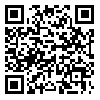Volume 3, Issue 2 (2023)
jpt 2023, 3(2): 187-198 |
Back to browse issues page
Download citation:
BibTeX | RIS | EndNote | Medlars | ProCite | Reference Manager | RefWorks
Send citation to:



BibTeX | RIS | EndNote | Medlars | ProCite | Reference Manager | RefWorks
Send citation to:
Hosseinpour G. An Analysis of Indirect Speech Acts. jpt 2023; 3 (2) :187-198
URL: http://jpt.modares.ac.ir/article-34-68559-en.html
URL: http://jpt.modares.ac.ir/article-34-68559-en.html
Islamic Mysticism Department, Research Institute of Imam Khomeini and Islamic Revolution, Tehran, Iran
Abstract: (1400 Views)
In Speech Acts, John Searle dealt with the analysis of literal meaningful utterances, but in Expression and Meaning, he generalizes his theory to meaning and uses it to account for performing and understanding nonliteral utterances where the speaker means something other than what he is saying. Thus, Searle’s question about indirect speech acts is how a speaker might say something and mean it, but he also means something else. For this purpose, the area of directives is the most useful to Searle. The presence of decency in acts in the category of directive is Searle’s main motivation for researching indirect speech acts. Still, most examples are found in the acts in the category of commissive and not in the acts in the category of directive. At the same time, Searle’s approach does not conform to the usual explanatory paradigms; it’s somewhat like an epistemological analysis of perception. Thus, this article aims to review, analyze, and critique Searle’s approach.
Article Type: Original Research |
Subject:
Philosophy of Language (Analytical)
Received: 2023/04/17 | Accepted: 2023/05/26 | Published: 2023/06/22
Received: 2023/04/17 | Accepted: 2023/05/26 | Published: 2023/06/22
References
1. Austin J (1962). How to do things with words. Oxford: Oxford University Press. [Link]
2. Recanati F (2002). The limits of expressibility. In: Barry S, editor. Cambridge: Cambridge University Press. pp. 189-213. [Link] [DOI:10.1017/CBO9780511613999.009]
3. Searle JR (2001). JL Austin. In: Martinich AP, Sosa D, editors. A companion to analytic philosophy. Oxford: Blackwell Publishers. pp. 218-230. [Link] [DOI:10.1002/9780470998656.ch18]
4. Searle JR, Vanderveken D (1985). Foundations of Illocutionary Logic. Cambridge: Cambridge University Press. [Link] [DOI:10.1007/1-4020-3167-X_5]
5. Searle JR (1979). Expression and meaning; Studies in the theory of speech acts. Cambridge: Cambridge University Press. [Link] [DOI:10.1017/CBO9780511609213]
6. Searle JR (1969). Speech acts. An essay in the philosophy of language. Cambridge: Cambridge University Press. [Link] [DOI:10.1017/CBO9781139173438]
7. Searle JR (1968). Austin on elocutionary and illocutionary acts. Philosophical Review. 77(4):405-424. [Link] [DOI:10.2307/2183008]
8. Searle JR (1962). Meaning and speech acts. Philosophical Review. 71(4):423-432. [Link] [DOI:10.2307/2183455]
9. Vanderveken D (2002). Searle on meaning and action. In: Grewendorf G, Meggle G editors. Speech acts, mind, and social reality; Discussions with John R. Searle. Heidelberg: Springer Verlag. pp. 141-161. [Link] [DOI:10.1007/978-94-010-0589-0_10]
| Rights and permissions | |
 |
This work is licensed under a Creative Commons Attribution-NonCommercial 4.0 International License. |






